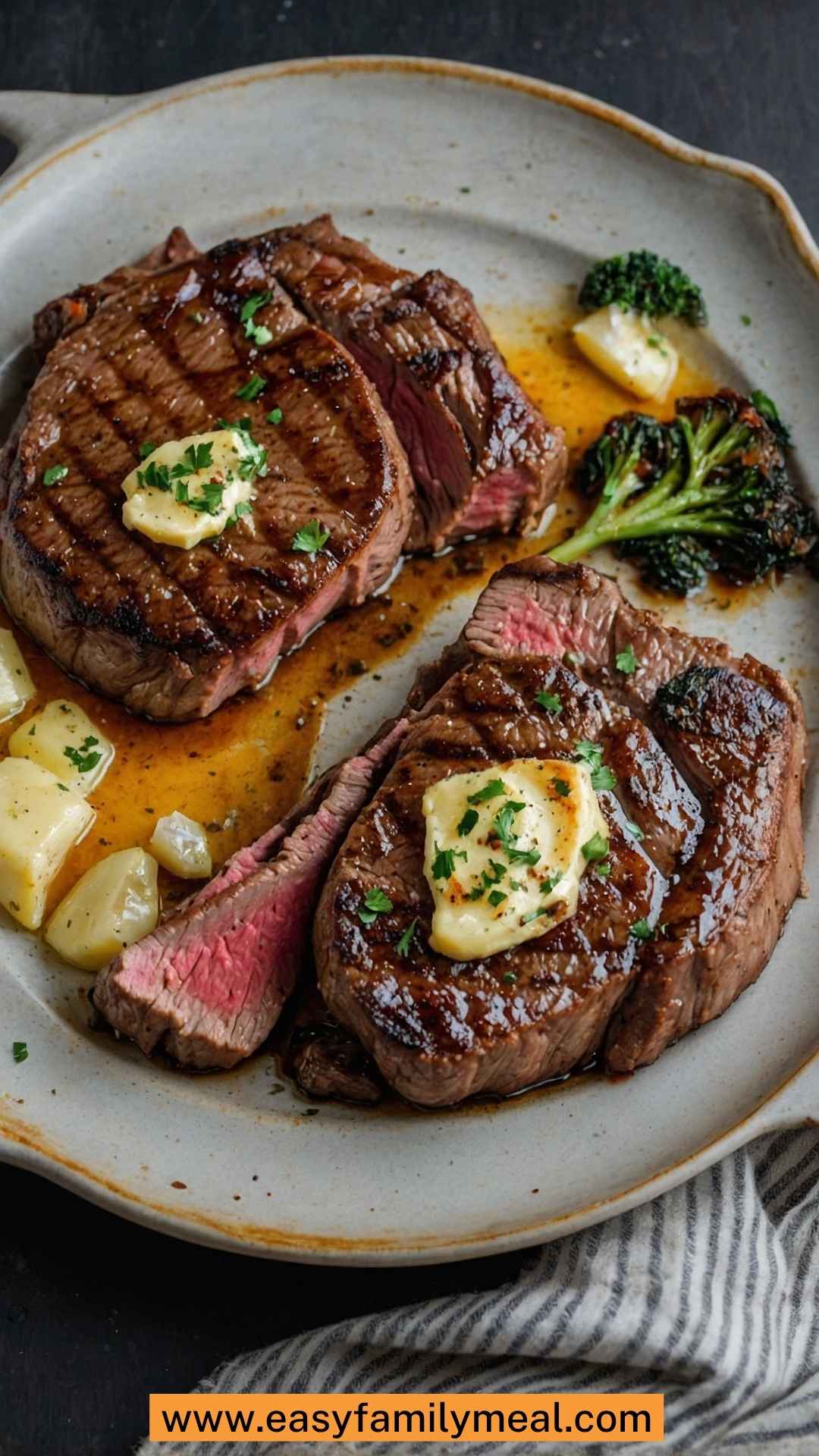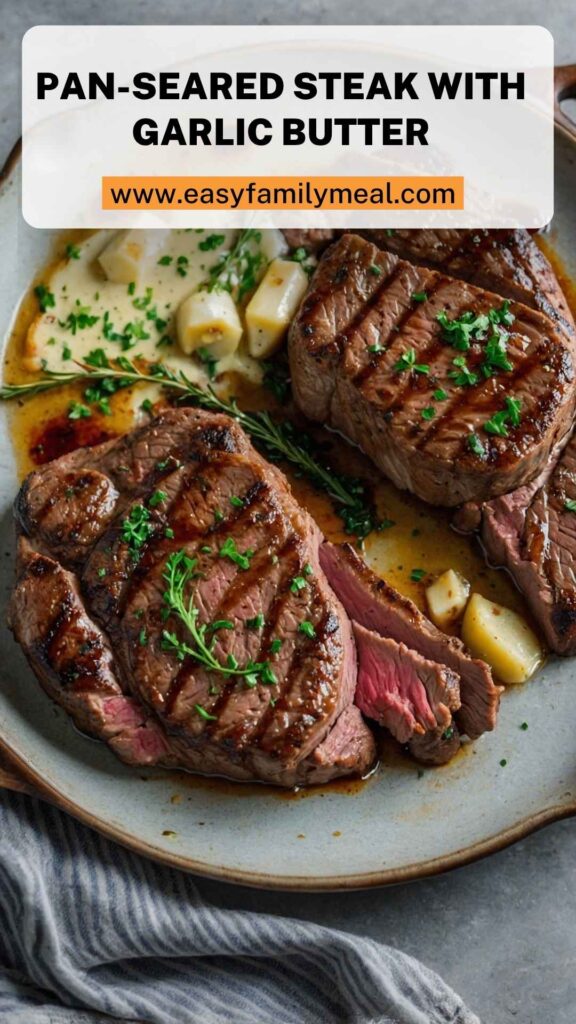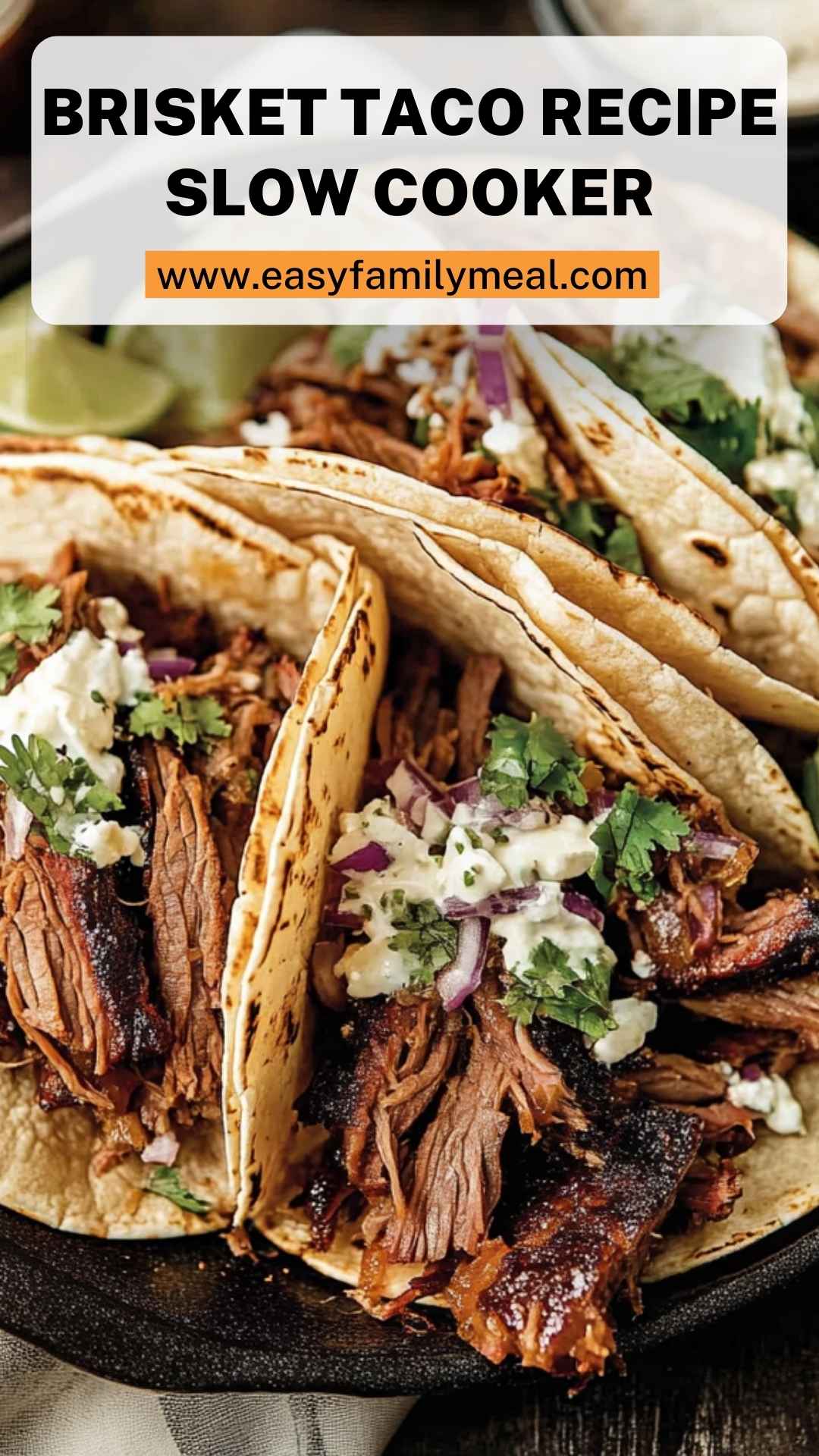Pan-seared steak with garlic butter pairs wonderfully with roasted vegetables like zucchini, bell peppers, and carrots, whose natural sweetness complements the rich meat.
Creamy mashed potatoes soak up the buttery garlic sauce, adding smooth texture.
A fresh green salad with tangy vinaigrette offers a crisp, refreshing contrast that balances the meal. Crusty bread, such as sourdough or French baguette, is perfect for mopping up every last bit of garlic butter.
Together, these sides elevate your steak dinner into a truly memorable dining experience. Ready to dive into cooking tips?

Why This Recipe Works?
Why should you put your trust in this recipe? Allow me to explain.
1. Expert Techniques
This recipe combines traditional cooking methods with a few expert tips I learned over the years. The result is a steak that is perfectly caramelized on the outside and juicy on the inside. Simple yet effective techniques can elevate your cooking.
2. Ingredient Quality
Using high-quality, fresh ingredients is non-negotiable. Here, a select cut of steak, fresh herbs, and real butter work wonders together. The combination creates an explosion of flavor.
3. Flavor Balance
Garlic butter adds richness and depth. The enhancement from fresh herbs cuts through the creaminess, creating a balanced dish that keeps you coming back for more.
4. Versatility
This recipe is adaptable. Whether you prefer ribeye, New York strip, or even a leaner cut like sirloin, it works. It’s all about adjusting cooking times to achieve the desired doneness.
How Does It Taste Like?
Imagine sitting down to a perfectly cooked steak, a fork poised for the first bite. You cut through the tender meat, and the juices mingle with the garlic butter. It’s rich, savory, and aromatic, with a hint of herbs. Every bite feels indulgent yet satisfying. It’s not just a meal; it’s an event.
What Sets This Recipe Apart?
So, what’s the secret sauce—figuratively speaking, of course? Many pan-seared steak recipes exist, but this one stands out due to its attention to detail.
Using finely chopped shallots creates a sweet, delicate layer of flavor. The gentle crush of the garlic releases its essence, infusing the steak uniquely.
While many may rely on a marinade or rub, this method allows the meat’s natural flavor to shine. Instead of masking, you enhance.
This recipe respects the steak and its qualities, ensuring the final dish celebrates the ingredient itself.
Ingredients
Now let’s run through what you’ll need to turn out this delicious meal.
- 2 fresh thyme sprigs
- 2 steaks, Ribeye or New York strip
- 2 tablespoons unsalted butter
- 1 teaspoon coarse kosher salt
- 1 teaspoon finely chopped shallots
- 1 tablespoon neutral cooking oil
- 3/4 teaspoon freshly cracked black pepper
- 1 garlic clove, peeled and gently crushed

Instructions
Now that we have everything ready, let’s get cooking!
Step 1: Prepare the Steak
Take the steaks out of the fridge about 30 minutes before cooking. Allowing them to come to room temperature ensures even cooking.
Pat them dry with paper towels to remove moisture for better searing. Season liberally with salt and pepper on both sides.
Step 2: Heat the Pan
Use a heavy skillet, preferably cast iron, for optimal heat retention. Heat the skillet over medium-high heat and add the neutral cooking oil. You want the oil to shimmer, indicating it’s ready.
Step 3: Sear the Steak
Place the steaks in the hot pan, laying them away from you to avoid splattering. Don’t move them around for the first few minutes; let them sear properly. After 4-5 minutes, check for a nice crust; if it lifts easily, it’s time to flip.
Step 4: Add Garlic and Butter
Once flipped, add the unsalted butter, garlic, shallots, and thyme to the pan. As the butter melts, spoon it over the steak. This basting technique infuses flavor and moisture.
Step 5: Cook to Desired Doneness
Use a meat thermometer for the best results. Aim for 130°F for medium-rare and 140°F for medium. This usually takes about 3-4 minutes after flipping.
Step 6: Rest Before Serving
Transfer the steak to a cutting board and let it rest for at least 10 minutes. This allows the juices to redistribute. You wouldn’t want to cut into it too soon; trust me, it will be worth the wait.
Notes
Here are some tips to ensure your steak comes out perfectly:
- Quality Matters: Choose good-quality meat from a reliable source. Grass-fed options often have more flavor.
- Don’t Crowd the Pan: If cooking multiple steaks, do it in batches. Overcrowding can lower the temperature, preventing the tasty crust.
- Let it Rest: Patience pays off; resting helps keep your steak juicy.
- Use a Meat Thermometer: If you’re unsure about doneness, this tool takes the guesswork out.
- Experiment with Flavors: Play around with different herbs and additional flavors like rosemary or crushed red pepper.
How Do You Store This Pan-Seared Steak with Garlic Butter?
If you have leftovers, here’s how to store them properly:
- Cool Down: Allow the steak to cool to room temperature after cooking.
- Wrap: Wrap each piece tightly in aluminum foil or plastic wrap to avoid drying out.
- Refrigerate: Store it in the fridge for up to three days.
- Reheat: For reheating, a quick sear in a hot pan brings the flavor back, just be cautious not to overcook.
Sides for Pan-Seared Steak with Garlic Butter
- Garlic Mashed Potatoes
Creamy mashed potatoes provide a perfect vehicle for soaking up the flavorful garlic butter. Boil the potatoes until tender, mash them, and stir in a generous helping of butter and cream for a rich texture. - Sautéed Green Beans
Fresh green beans sautéed with garlic and a sprinkle of lemon juice create a vibrant side. The crunchiness of the beans balances the richness of the steak beautifully. - Creamed Spinach
If you want to elevate your steak night, go for creamed spinach. The creaminess complements the savory flavors of the steak while adding a hit of nutrients.
Alternatives for Ingredients
Maybe you don’t have everything on hand? Here are some substitutions:
- Steak Cuts: If you don’t have ribeye or New York strip, flank steak or sirloin will also work. Just be mindful of cooking times.
- Unsalted Butter: If you’re out of unsalted butter, salted butter will suffice. Just reduce the salt you add to the steak.
- Fresh Herbs: Dried thyme can replace fresh thyme; use about a third of the amount since dried herbs are more potent.
- Kosher Salt: Regular table salt can be used, but you might want to use a bit less since it’s finer and saltier.

Conclusion
Pan-seared steak with garlic butter is more than a meal; it’s an experience that celebrates good food. Using simple yet effective techniques, high-quality ingredients, and a clear understanding of flavors leads to a dish that is satisfying and memorable.
As you’ve seen, it’s all about the process, from selecting your steak to choosing the perfect sides. I hope this recipe finds its way into your kitchen and becomes a favorite in your household. Experiment, enjoy, and remember: the best meals are the ones shared with loved ones. Happy cooking!
You’ll also like the following recipes!
- Detroit Style Pizza Copycat Recipe
- Grilled Chicken Sandwich Recipe
- Best Braised Beef Short Ribs In Red Wine Sauce

Pan-Seared Steak With Garlic Butter – Easy Family Meal
Description
There’s something magical about cooking steak, especially when garlic butter is involved. The sizzle, the aroma, and the satisfying doneness are only part of the enjoyment.
I’ll share my journey on perfecting the pan-seared steak, complete with garlic butter, to ensure it becomes a staple at your dinner table.
This dish is not just food; it’s an experience. So roll up your sleeves, and let’s turn your kitchen into a steak haven.
Ingredients
Instructions
Step 1: Prepare the Steak
-
Take the steaks out of the fridge about 30 minutes before cooking. Allowing them to come to room temperature ensures even cooking.
Pat them dry with paper towels to remove moisture for better searing. Season liberally with salt and pepper on both sides.
Step 2: Heat the Pan
-
Use a heavy skillet, preferably cast iron, for optimal heat retention. Heat the skillet over medium-high heat and add the neutral cooking oil. You want the oil to shimmer, indicating it’s ready.
Step 3: Sear the Steak
-
Place the steaks in the hot pan, laying them away from you to avoid splattering. Don’t move them around for the first few minutes; let them sear properly. After 4-5 minutes, check for a nice crust; if it lifts easily, it’s time to flip.
Step 4: Add Garlic and Butter
-
Once flipped, add the unsalted butter, garlic, shallots, and thyme to the pan. As the butter melts, spoon it over the steak. This basting technique infuses flavor and moisture.
Step 5: Cook to Desired Doneness
-
Use a meat thermometer for the best results. Aim for 130°F for medium-rare and 140°F for medium. This usually takes about 3-4 minutes after flipping.
Step 6: Rest Before Serving
-
Transfer the steak to a cutting board and let it rest for at least 10 minutes. This allows the juices to redistribute. You wouldn't want to cut into it too soon; trust me, it will be worth the wait.
Nutrition Facts
Servings 4
- Amount Per Serving
- Calories 433kcal
- % Daily Value *
- Total Fat 16.3g26%
- Saturated Fat 4.9g25%
- Trans Fat 0.1g
- Cholesterol 207mg69%
- Sodium 734mg31%
- Total Carbohydrate 1g1%
- Protein 71g142%
* Percent Daily Values are based on a 2,000 calorie diet. Your daily value may be higher or lower depending on your calorie needs.
Note
- Quality Matters: Choose good-quality meat from a reliable source. Grass-fed options often have more flavor.
- Don’t Crowd the Pan: If cooking multiple steaks, do it in batches. Overcrowding can lower the temperature, preventing the tasty crust.
- Let it Rest: Patience pays off; resting helps keep your steak juicy.
- Use a Meat Thermometer: If you’re unsure about doneness, this tool takes the guesswork out.
- Experiment with Flavors: Play around with different herbs and additional flavors like rosemary or crushed red pepper.





